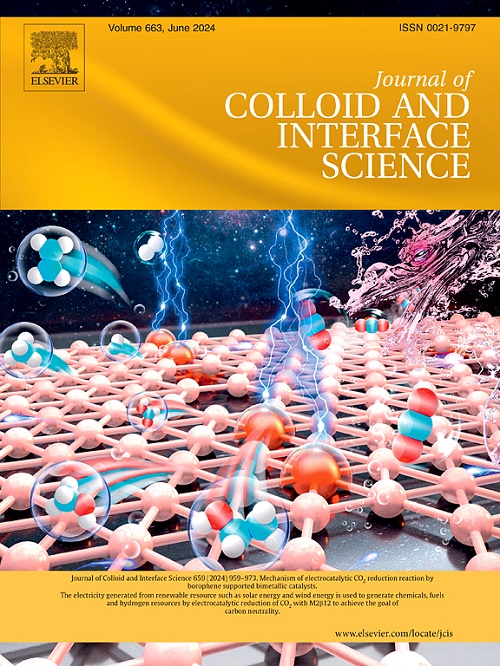A near-infrared light responsive nanoheterojunction for antibacterial and anti-inflammatory applications through programmed ROS regulation
IF 9.7
1区 化学
Q1 CHEMISTRY, PHYSICAL
引用次数: 0
Abstract
Reactive oxygen species (ROS) play a fundamental role in antibacterial therapeutic strategies. However, excessive ROS generation can disrupt redox homeostasis and induce a severe inflammatory response, causing immense stress on surrounding cells and tissues. Herein, an intelligent nanoheterojunction established with Prussian blue (PB) and manganese polyphthalocyanine (MnPPc), PB@MnPPc (PM), was established to achieve sequential antibacterial and anti-inflammatory functions via controllable ROS regulation. With spatiotemporal control of near-infrared (NIR, 808 nm) light, PM demonstrates the potential for on-demand generation and scavenging of ROS. When exposed to NIR irradiation, PM exhibits prominent bactericidal abilities, which result from its augmented singlet oxygen generation capacity and photothermal effects. These advantages originate from the narrow band gap as well as the enhanced electron-hole separation and transfer efficiency enabled by its unique heterostructure. Upon cessation of NIR irradiation, PM efficiently achieves ROS elimination and inflammation alleviation through its superior superoxide dismutase-like and catalase-like activities. In vivo studies in a mouse Staphylococcus aureus-infected skin wound model further confirmed the superior therapeutic effects of PM, which effectively eliminated bacteria, relieved inflammation, promoted collagen deposition, and angiogenesis. This work provides an attractive therapeutic modality for equipping nanoheterojunctions with antibacterial and anti-inflammatory properties through programmed ROS regulation.

近红外光响应纳米异质结抗菌和抗炎应用通过程序化ROS调节
活性氧(ROS)在抗菌治疗策略中起着至关重要的作用。然而,过量的ROS生成会破坏氧化还原稳态并诱导严重的炎症反应,对周围细胞和组织造成巨大的应激。本文建立了一种由普鲁士蓝(PB)和聚酞菁锰(MnPPc) PB@MnPPc (PM)组成的智能纳米异质结,通过可控的ROS调节来实现顺序抗菌和抗炎功能。在近红外(NIR, 808 nm)光的时空控制下,PM显示了按需生成和清除ROS的潜力。当暴露在近红外辐射下时,PM表现出突出的杀菌能力,这是由于其单线态氧生成能力和光热效应的增强。这些优点源于其窄带隙以及其独特的异质结构所增强的电子-空穴分离和转移效率。在NIR照射停止后,PM通过其优越的超氧化物歧化酶样和过氧化氢酶样活性有效地消除ROS和减轻炎症。在金黄色葡萄球菌感染的小鼠皮肤创面模型的体内研究进一步证实了PM的优越治疗效果,它能有效地消灭细菌、缓解炎症、促进胶原沉积和血管生成。这项工作提供了一种有吸引力的治疗方式,通过程序化的ROS调节,使纳米异质结具有抗菌和抗炎特性。
本文章由计算机程序翻译,如有差异,请以英文原文为准。
求助全文
约1分钟内获得全文
求助全文
来源期刊
CiteScore
16.10
自引率
7.10%
发文量
2568
审稿时长
2 months
期刊介绍:
The Journal of Colloid and Interface Science publishes original research findings on the fundamental principles of colloid and interface science, as well as innovative applications in various fields. The criteria for publication include impact, quality, novelty, and originality.
Emphasis:
The journal emphasizes fundamental scientific innovation within the following categories:
A.Colloidal Materials and Nanomaterials
B.Soft Colloidal and Self-Assembly Systems
C.Adsorption, Catalysis, and Electrochemistry
D.Interfacial Processes, Capillarity, and Wetting
E.Biomaterials and Nanomedicine
F.Energy Conversion and Storage, and Environmental Technologies

 求助内容:
求助内容: 应助结果提醒方式:
应助结果提醒方式:


